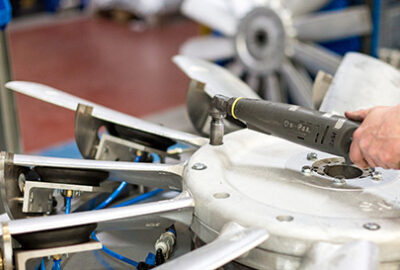16 January 2019
Is your building making you sick?
By
16 January 2019
We spend 90% of our time indoors. While it’s widely accepted that outdoor air pollution has an impact on health, the effects of indoor air pollution are less recognised. There’s a phenomenon that causes a range of symptoms from stuffy noses to asthma, that is a result of the indoor air pollution in your building. This is known as Sick Building Syndrome.
The air outside may be thick and foggy with air pollution compared to inside but the air indoors is two to five times more polluted than outdoor air. Often we’ll see buildings that are sealed shut to save on heating and air conditioning costs but an airtight building won’t have proper ventilation to remove the pollutants from the air. According to the Consumer Product Safety Commission, poor indoor air quality can be found in about 30% of new and remodelled buildings.
These pollutants can cause respiratory, skin and neurological issues. Often occupants may mistake these symptoms with a cold or even flu. However, a key difference is that these symptoms are often alleviated when the occupant leaves the building.
Just some of the long list of symptoms include:
- Breathing difficulties
- Congestion
- Tightness in the chest
- Throat, eye and nasal irritation
- Allergy like symptoms such as sneezing
- Dry, itchy skin
- Dizziness
- Fatigue
- Nausea
- Body aches
- ‘Foggy’ head
- Headaches
- Forgetfulness
- Fever and chills
Along with the obvious impact on occupant’s health and wellbeing, there are real economic consequences. In another recent study, a survey of 100 office buildings in America, 23% of office workers experienced frequent symptoms of Sick Building Syndrome. The full impact was hidden in sick days, lower productivity and medical costs. The economic impact is enormous, with an estimated decrease in productivity of around 2% nationwide, this is adding up to an annual cost to the United States of approximately $60 billion.
The biggest contributor to Sick Building Syndrome is ineffective ventilation. Throughout the day contaminants are emitted into the air such as formaldehyde from wooden furniture and floors, ozone from printers, pesticides, and condensation from kitchens and even breathing which in turn can lead to mould. With an effective ventilation system, these pollutants are extracted from the air so occupant’s are breathing healthier, cleaner air. While waiting for a ventilation system to be installed, to reduce the effect of Sick Building Syndrome you can do the following:
- Use organic, no fragrance cleaners
- Regularly clean and vacuum to remove dust
- Set the air conditioner to an optimum temperature, which is generally around 21°C
- Test and remove mould if it’s growing
- Take regular breaks and step outside




